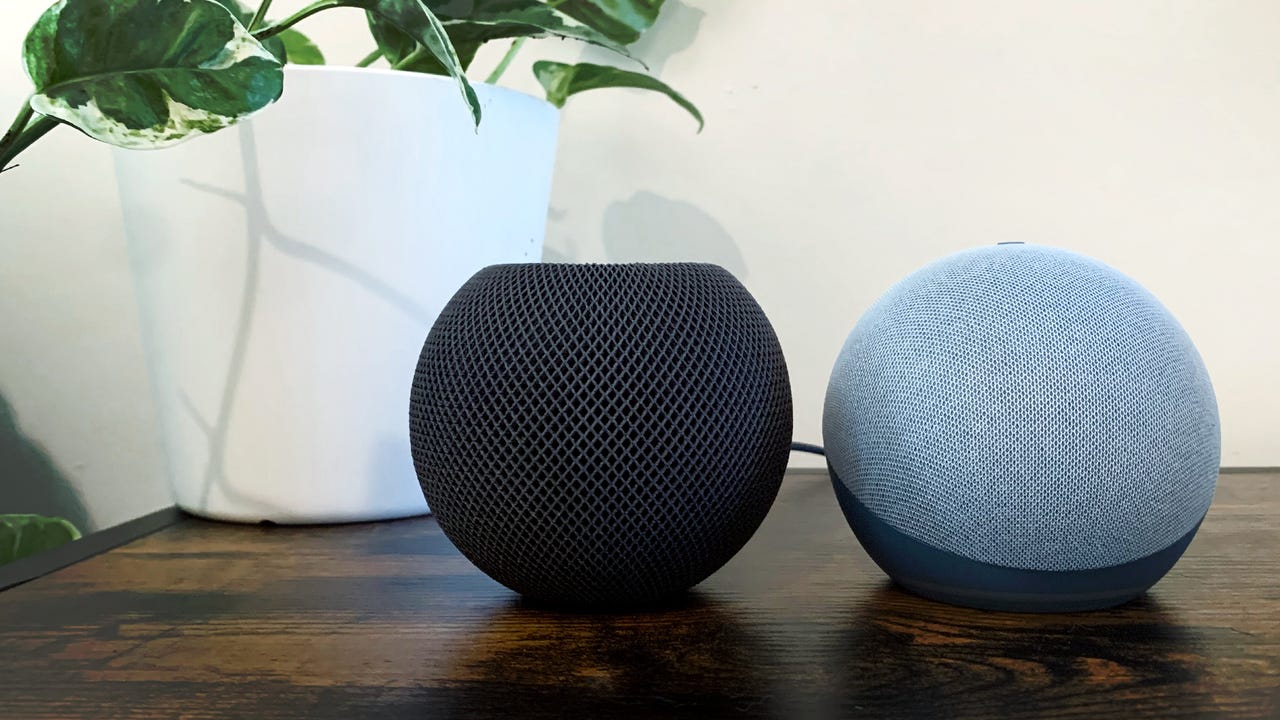































 Image: Maria Diaz/
Image: Maria Diaz/ If you've ever had a voice assistant in your home or phone, you've probably played around with different questions or commands out of sheer curiosity. And this means that you're also probably familiar with how useful -- or not -- they can be.
Here are your best options from Google, Apple, and more.
Read nowWhen I added anEcho Dot to our home to see how it would compare with myHomePod Mini , I was pleasantly surprised right from setup by a featureAlexa had that Siri did not: a multilingual mode for both Spanish and English.
This makes it possible for the Echo device to not only understand commands in both English and Spanish, but to also respond in each language accordingly, depending on which one you used to make the command.
Also: How to make Alexa bilingual
And it's not limited to Spanish -- Amazon has embraced bilingualism to include languages such as German, Japanese, Italian, French, Portuguese, and Hindi. These options aren't available on some older versions of Amazon's devices, but if you've got a third-generation or more recent Echo Dot you should have access to Spanish.
You can opt for a bilingual Alexa by opening your Amazon Alexa app, accessing Device Settings for the Echo device in question, then Settings, and scroll down to find Language. After that, users can choose either a single language, like English, or a combination of a set of languages, like English/Spanish, English/Italian, and so on.
Each Echo device in a home can have its own language settings. The Alexa app lets users set different languages for each Echo so a living-room Echo Dot can be set to English and Spanish, for example, while another in a kitchen can have Alexa in just English, a different language, or a combination of two other languages.
Google Assistant takes it one step further: It has a multilingual setting that supports up to three languages at once.
Also: Trade in your old devices for Amazon gift cards. Here's how
My husband and I immigrated to the US as adults, so we both speak Spanish exclusively at home when talking to each other. When you add kids that attend school to the mix, it results in tiny humans speaking broken Spanglish or bouncing from one language to another.
Taking into consideration that about 19% of the US population identifies as Hispanic or Latino, and that just over 13% of the total population speaks Spanish at home, we obviously aren't the only ones that go back and forth between two languages.
We also have many family members living back home that like to visit often, so having a smart speaker that can follow commands to control the lights in either of the two languages may not seem like a big deal for many; but in a world where inclusivity is in short supply, it's a big deal to us.
And a multilingual setting isn't exclusive to Spanish speakers: You could use the setting to make Alexa a live-in language teacher if you or your kids are looking to learn Spanish. If set to both English and Spanish, Alexa will work as usual in English, and simply respond in Spanish when a request comes in that language, giving you free conversation practice.
Also:How to set up motion-triggered smart lights as an Alexa routine
Though I use Siri on my phone, I don't actually enjoy Siri that much. It's not the brightest tool in the shed, and though Alexa comes with its own set of issues, I much prefer Amazon's voice assistant over Apple's for mundane tasks.
I've used Siri on and off since it came out in 2011, with some breaks in between when I drifted away from iPhones in favor of Android and Windows phones (don't judge me on the latter, it was the 2010s). While Siri has certainly improved with age, it has a long way to go.
Also: iPhone vs Echo: How Apple and Amazon are building different versions of your future
While I can't speak Spanglish with Siri on my phone yet, I'll keep my hopes up that Apple will consider how many of us would appreciate the option. After all, 15% of Apple's employees identify as Hispanic or Latino, which is close to the percentage of people in the US that speak Spanish at home.
 Tags quentes :
Nosso processo
Home & Escritório
Vida Profissional
Produtividade
Tags quentes :
Nosso processo
Home & Escritório
Vida Profissional
Produtividade